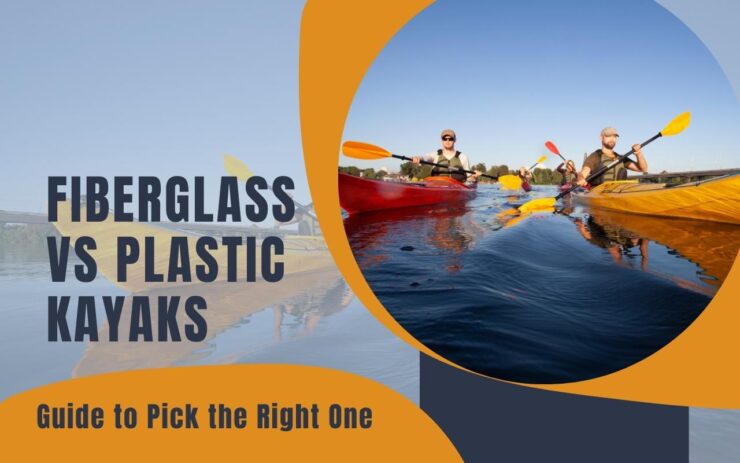Buying a new kayak is an exciting time in the life of someone who enjoys the outdoors, particularly being on the water. There is so much that a small vessel like this can do for you and it goes way beyond just paddling or having a way to cross a body of water.
Kayaking on its own is a fun sport activity, but it is also capable of making other already exciting and fun activities better and more optimal. Be that as it may, it is not easy to pick the right one.
Deciding between two materials of an essential item you need is never easy. The fact that there is an option usually means that the differences are plenty. On top of that, it means they are important enough for both types to be equally present on the market.
However, they are there for a reason: to suit different customers. This is all true for kayaks, single-paddler vessels that can be used for a wide range of activities.
From fishing and hunting to exploration and recreation, kayaks have been around for thousands of years. Back in the day most of them were wooden with certain parts being made from hides.
Today, however, there are all sorts of materials to choose from but not all of them are equal.
Wooden kayaks still exist, but the most common options are far more modern. Two such examples are fiberglass and plastic kayaks. So what is the difference between them and how do they compare? Read on to find out.
Table of Contents
TogglePlenty to Think About
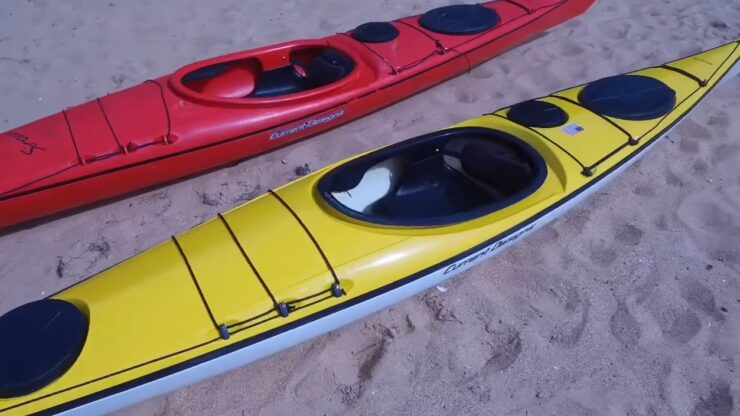
As it turns out, fiberglass and plastic kayaks have some crucial differences between them, enough to make the final choice all but easy to make. Before you can make the final decision there is a lot to think about and many choices to juggle between.
Areas that they differ most in revolve around the core features and abilities, mainly the durability, the cost, and the weight of the kayak. These three factors are what most customers care about when browsing the market and for good reason.
Durability Differences
First of all, durability is important because a kayak is an investment. It should last you for years without any issues. With proper maintenance, it is something to be used for a long time. Durability also comes in the form of resistance to rocks, timber, and the elements and how well it survives transportation and storage. Most customers want their stuff to be durable because it means it will survive for longer no matter what you throw at it.
Weight Differences
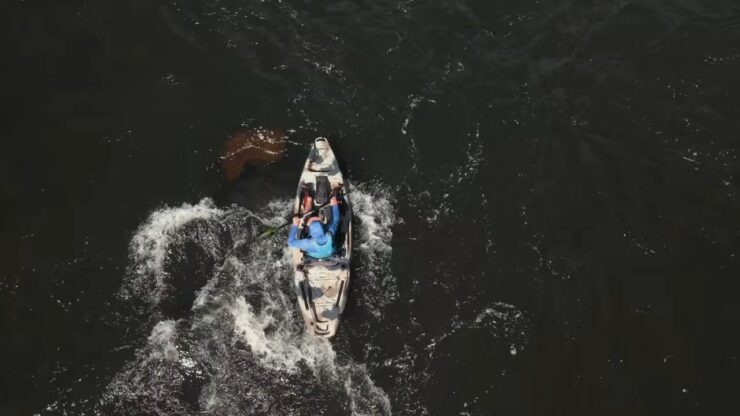
Weight is another big factor that every kayaker cares about. Kayaks that are easy to use and simple to transport are favored among the crowd. If there is no hassle to carry it, transport it, and store it at home, it is a no-brainer choice. The lesser its weight, the more popular the kayak. Fiberglass is famous for its lightweight properties which is always a better option if you want lighter commodities. There are different types of plastic but none of them are lighter than fiberglass options.
Cost Differences
Finally, we have the price as the ultimate deciding factor for most customers. As is the case with everything else, more people are drawn to cheaper, or at least affordable options. Going expensive does not always mean better features and higher quality, and people know it. However, with things that are supposed to be long-term investments, picking a budget-friendly option may not prove the best choice and kayaks certainly qualify. Finding a balance between features is how many people pick between their choices and oftentimes the best option is the best of both worlds.
About Plastic Kayaks
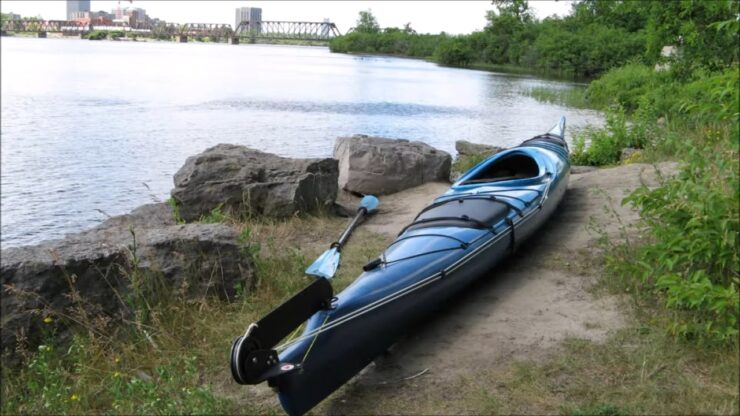
So what does it mean for a kayak to be made of plastic, and is it a good thing or a bad thing? Well, it is not an either/or choice as this is not a black-and-white choice. Plastic kayaks are the more affordable of the two since they are made of lower-grade plastic. In construction, they cost less to manufacture so companies save money while making them.
However, this negatively impacts a few things in their design. First of all, they are less durable than fiberglass models and a lot less resistant to impacts, both direct and indirect. This prevents them from being the first choice for any kayaker who wants to hit the whitewater and do some heavy-duty kayaking.
For beginners though, they may be the better option because they are not going to be going that hard nor do they need to spend a lot of money on their first kayak.
The biggest disadvantage of plastic kayaks is their weight. There is no denying it, they are heavy. What this means is a much tougher time getting it to and from the water, in and out of your vehicle, and in and out of home storage.
Also, launching it is harder as you need more force to get it moving once you are in the water. Even paddling can feel rough at times because you are moving more weight through the water.
- More affordable
- Easier to find, more models available
- Durable enough overall
- Good for beginners
- Good sun protection
- Slower in water
- Very heavy
- Difficult to store and handle
About Fiberglass Kayaks
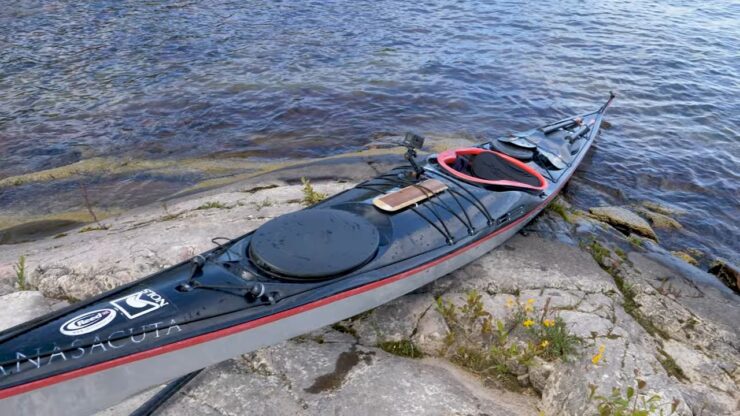
Fiberglass is an ingenious composite material because it is lighter than traditional plastic but much stronger and more durable. This defies logic but it is the truth. These two features make it the perfect choice for a kayak material because the boats need to be durable, impact-resistance, and lightweight.
The biggest issue with fiberglass kayaks is their price. For the manufacturer, they take much longer to make and they are tougher to design and make into reality. This means the price tag is much higher, making them the more expensive option.
However, when you add the lightweight nature and their durability and strength into the equation, it all evens out nicely and presents the customers with a clear choice.
Fiberglass kayaks are easier to store, handle, carry, and transport. What is more, they are easier to control in water as they breeze through it more lightly. Plastic is stiffer and it impacts the water harder, making plastic kayaks more challenging to control and maneuver. For a run in the whitewater where you look for adrenalin and heavy-duty kayaking, fiberglass is the only choice.
- Reinforced fiberglass is very strong
- The most durable kayak material
- Very lightweight
- Fast in water, easy to maneuver
- Expensive
- Limited amount of models
- Not great for beginners
- Fiberglass does not do well in the sun
When to Pick What?
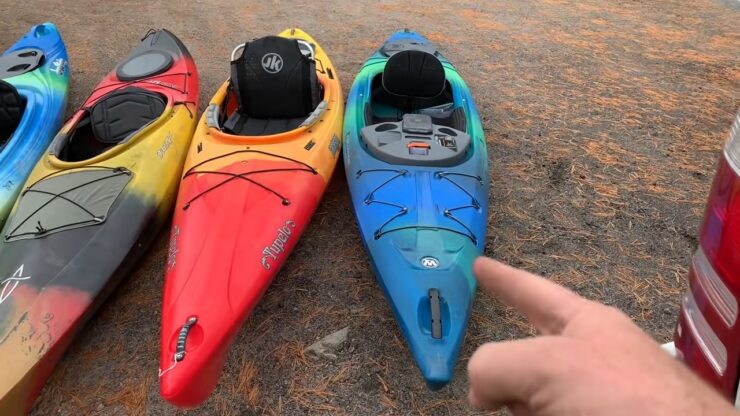
Between the two, it really does seem like the trouble lies in who will be using the kayak and in what circumstances. When it comes to plastic kayaks, they are best suited for beginner and novice kayakers who still do not go out that often. It is a new activity in their life and something they are far from being proficient in.
Plastic kayaks are also good for occasional fishermen who do not always fish from their paddling boat. The weight will not be an issue as they only reach for the boat every once in a while. Since you do not need sturdiness and durability but only a means to have some fun on the water, plastic is more than enough. It is cheaper too.
On the other hand, serious and experienced kayakers who know their way around whitewater rapids, as well as calmer rivers or lakes, will benefit more from fiberglass choices. They are the ones who go kayaking much more often which means they need a lightweight solution to make things easier. Transportation, carrying, and storage is a frequent issue so having a lighter kayak is the only logical solution.
On top of that, adrenalin junkies and seasoned anglers need a more capable vessel that is durable and strong since they spend more hours at a time in their kayak. Kayakers like these look for a long-time investment and the fact that a fiberglass kayak is more expensive does not bother them. They get what they pay for and that is the quality features of a capable kayak.
Conclusion and Takeaways
In the end, the difference becomes much clearer and it can basically be summed up in a few words. Plastic kayaks are cheaper, there are more of them, and they are not very strong or durable. This makes them the ideal choice for beginner boaters who are prone to making mistakes and damaging their kayaks. Calm waters and easy weather conditions are where these vessels feel most at home.
Fiberglass kayaks that are reinforced with this lightweight composite are basically the opposite. They require a more experienced paddler at the helm. Their construction is of higher quality, they are more durable, and they weigh incomparably less.
The biggest downside is their price, but again, it is a fair trade considering what you get in return. Long distances and more difficult conditions are no match for fiberglass kayaks as they thrive in fast waters with lots of obstacles.
Meet Maria Alexander, the fearless adventurer steering the ship at KayakPaddling.net. Her mission? To convince you that life’s too short for dry land and that the best stories always start with “So there I was in my kayak…”
Related Posts:
- Heavy Duty Fishing: 11 Best Rods And Reels For Big Fish 2024
- 16 Best Kayak For Beginners 2024 - Kayaking Adventure Gear
- 10 Best Saltwater Fishing Boats - Ultimate Angling Adventure
- 12 Best Kayak GPS 2024 - Find Your Way to Adventure
- 12 Best Fishing Lures Ever 2024 - Baits That…
- 10 Best Kayaks For Camping 2024 - Lightweight and…

